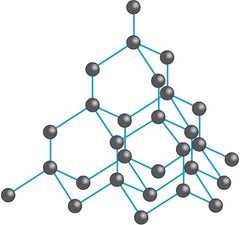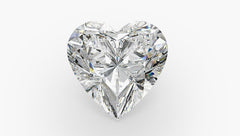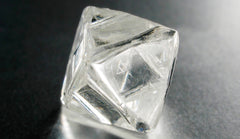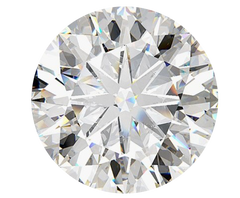April 02, 2019

If the diamond is your birthstone, then you are very fortunate. Diamonds can be extremely beautiful. They are a unique gemstone made of mainly a single element – carbon. Carbon can come in many forms; most are not very rare or valuable, like graphite or coal. Diamond has its carbon atoms arranged in a special way, which makes diamond the hardest (Moh’s) substance known. Since diamonds are so hard, they were initially very difficult to polish.

Diamond cutters over the last two hundred years have become adept at cutting and polishing diamonds. We can now cut them into many shapes. These shapes vary from the round brilliant cut that most people are very familiar with to the many patented cuts that few people have ever seen, like the Criss cut, the Asscher cut, and the Quadrillion cut.

Although some diamond octahedra (a well-defined natural diamond crystal shape) were used in the earliest of diamond jewelry, cutting a diamond to improve its appearance has always been the goal.
The earliest diamond cutting led to what is known as the “point cut”, which is the result of a basic polishing that creates a natural octahedron. These examples of very primitively polished diamonds can be found in jewelry dating back to the Roman times.

The history of true diamond cutting begins around the year 1375 in Nuremberg, Germany. Cutters gathered in Nuremberg and formed a “guild”. Over a long period of time, these cutters developed the techniques for diamond cutting and polishing that has led us to where we are today. What might be one of the largest leaps in cutting took place in 1919 when Marcel Tolkowsky, a cutter and engineer, developed what is called the “Ideal Cut” using mathematics. He published his findings in his book, Diamond Design, A Study of the Reflection and Refraction of Light in a Diamond.
Historically speaking, the most popular diamond shape has been the standard round brilliant cut. It is used as the center stones in many engagement rings and also makes up the side stones in most jewelry.
 Round Brilliant Cut Diamond
Round Brilliant Cut Diamond
Whether you are interested in something more classic like the round brilliant cut or something more unique, come to our store in South Pasadena today to see the variety of shapes available in our unrivaled collection of jewelry.
December 03, 2019
November 07, 2019
October 10, 2019